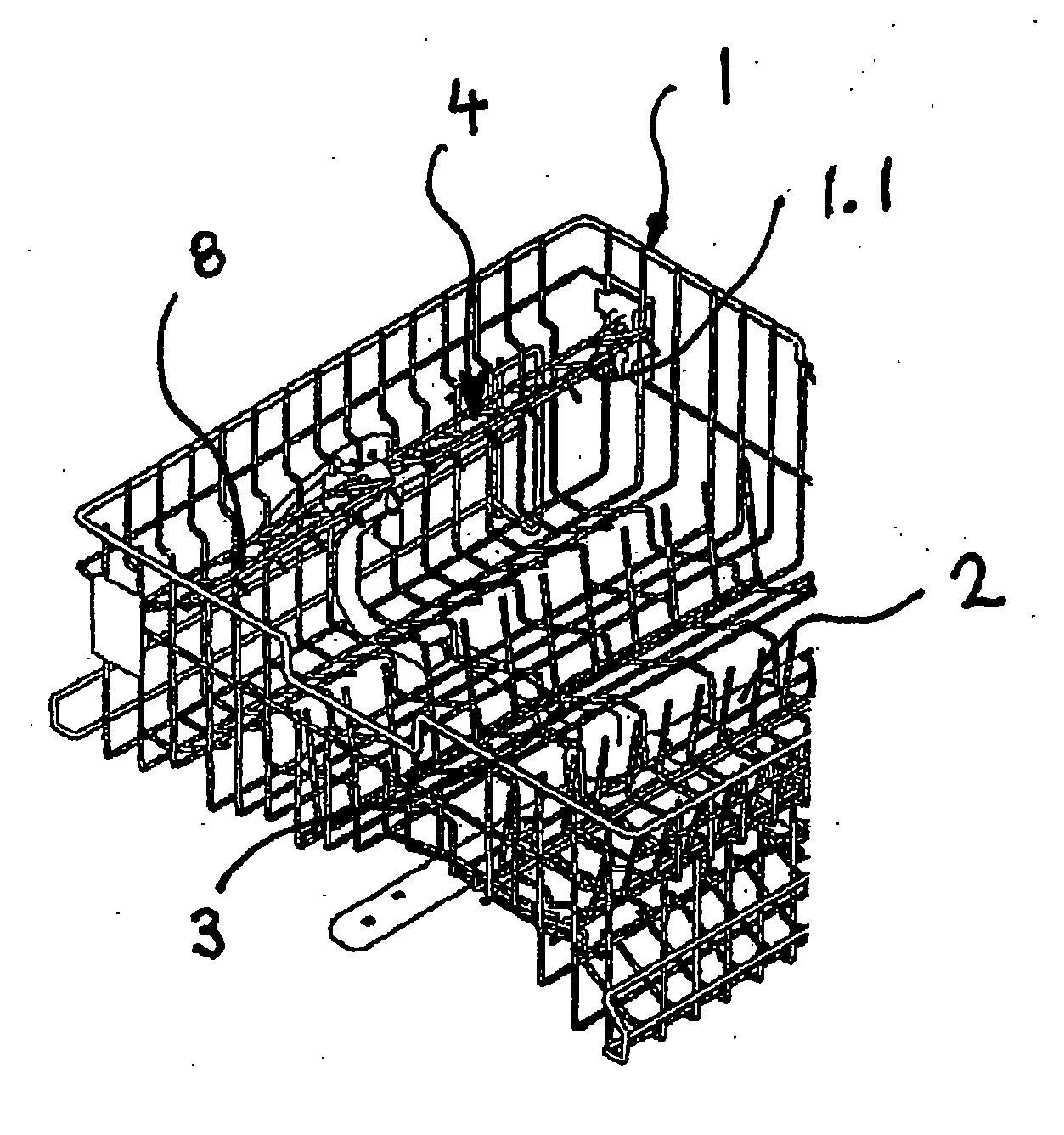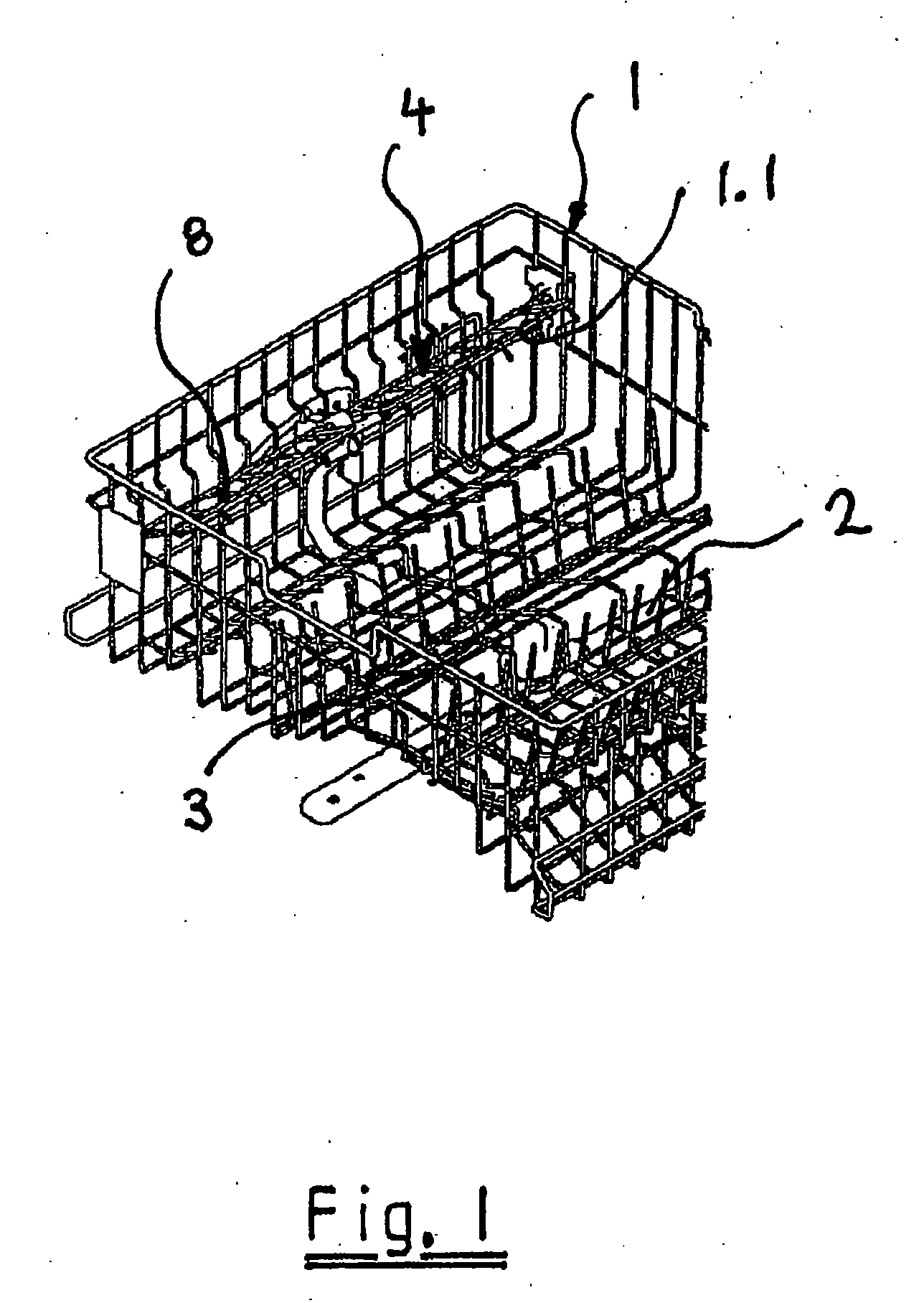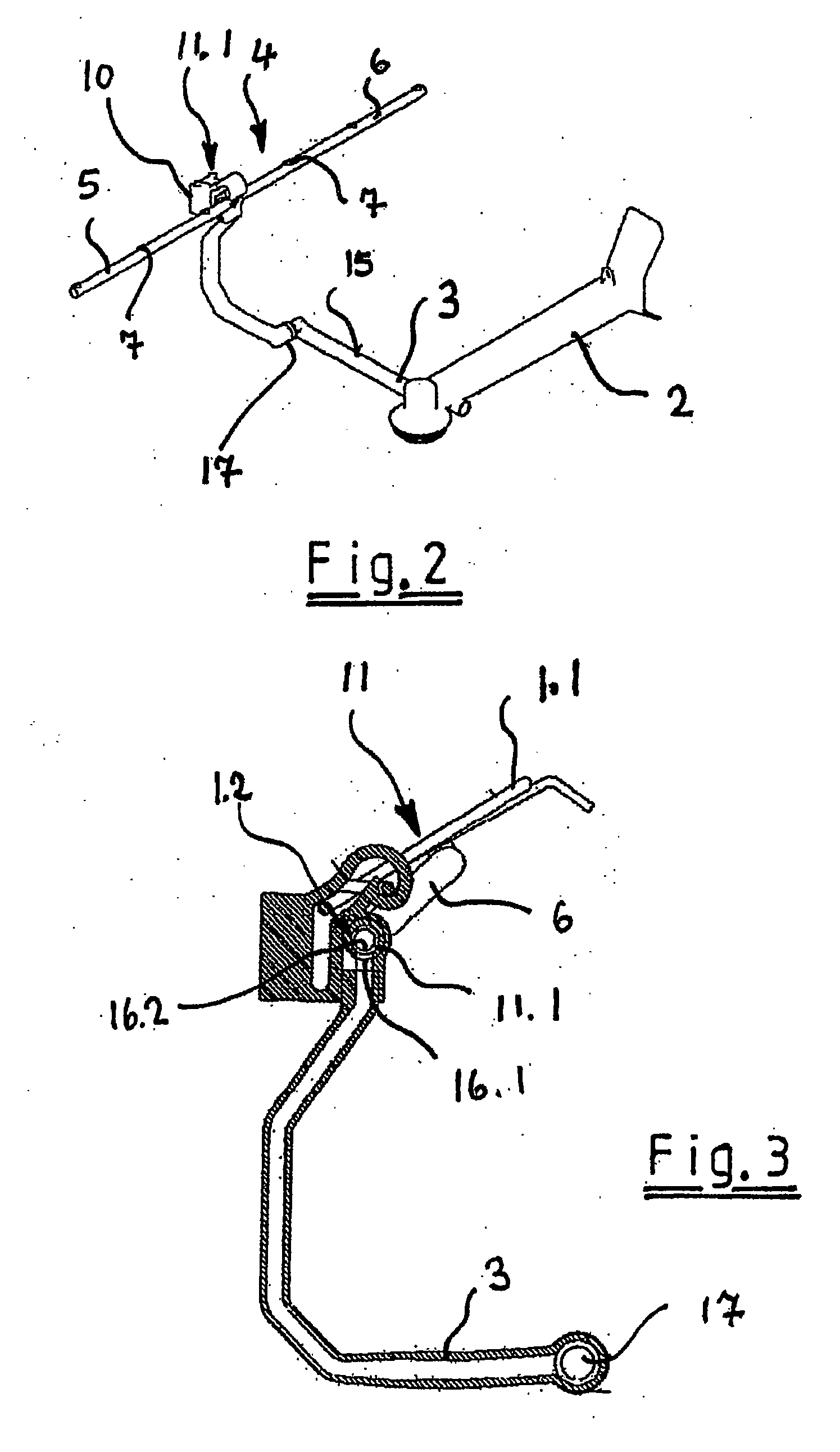Crockery basket for a dishwasher machine, comprising an intensive washing zone
a dishwasher machine and basket technology, applied in the direction of washing/rinsing machines, household cleaners, tableware, etc., can solve the problems of limited area in the rack supplied or covered by wash water, cup or glass is difficult to move in the rack region, and the spray jets do not always effectively reach the items to be washed, etc., to achieve the effect of no flow loss and easy pivoted
- Summary
- Abstract
- Description
- Claims
- Application Information
AI Technical Summary
Benefits of technology
Problems solved by technology
Method used
Image
Examples
first embodiment
[0023] In accordance with a first embodiment, intensive washing zone 4 is preferably arranged beneath pivotable cup support 1.1 of rack 1, as is clearly shown in particular in FIG. 3 and FIG. 3.1. The two pipe elements 5 and 6 are supplied with wash water through a valve 11.1, said valve 11.1 itself being in communication with pipe branch 3. Actuator 11 is constituted by cup support 1.1 itself, so that pivoting the cup support 1.1 will open or close valve 11.1. As is apparent when viewing cross-sectional FIGS. 3 and 3.1 together, valve 11.1 is located in the region of swivel axis 1.2 of cup support 1.1, the valve 11.1 itself being formed by a pipe-in-pipe arrangement having openings 16.1 and 16.2 that are aligned with each other when in the pass-through position, as is illustrated in FIG. 3. The combined view in FIG. 3.1 shows how valve 11.1 closes when cup support 1.1 is pivoted upward. When cup support 1.1 is in this position, opening 16.2 is rotated with respect to opening 16.1 i...
second embodiment
[0026]FIG. 4 shows a top view of a dish rack 1, here in particular the upper dish rack of a dishwasher. A feed tube 2 is in communication with dish rack 1, said feed tube supplying wash water to a spray arm, which is rotatably mounted beneath rack 1. At the end of feed tube 2, there is disposed a pipe branch 3 for an intensive washing zone 4 which is provided in the region of dish rack 1 and can be seen more clearly in FIG. 5, where the operative connection between intensive washing zone 4 and feed tube 2 can be clearly seen, in particular in the perspective view. It is apparent that when feed tube 2 is supplied with wash water by the circulating pump, intensive washing zone 4 is supplied with wash water through pipe branch 3 as well.
[0027] Intensive washing zone 4 is advantageously located beneath rack 1, as can be seen in particular from FIG. 4. Thus, the intensive washing zone does not cause any obstruction in the region of the upper rack holding system. Preferably, intensive wa...
PUM
 Login to View More
Login to View More Abstract
Description
Claims
Application Information
 Login to View More
Login to View More - R&D
- Intellectual Property
- Life Sciences
- Materials
- Tech Scout
- Unparalleled Data Quality
- Higher Quality Content
- 60% Fewer Hallucinations
Browse by: Latest US Patents, China's latest patents, Technical Efficacy Thesaurus, Application Domain, Technology Topic, Popular Technical Reports.
© 2025 PatSnap. All rights reserved.Legal|Privacy policy|Modern Slavery Act Transparency Statement|Sitemap|About US| Contact US: help@patsnap.com



